For well over a century, millions of typists around the world experienced the annoying interruption of their work caused by the necessity of replacing by hand, one at a time, completed sheets of paper with blank ones. Given that, it’s surprising to find that no one took the slightest notice. You’d think that in the heyday of the time and motion studies in workplace efficiency, methods developed by Frederick Winslow Taylor and the team of Frank and Lillian Gilbreth, one or more manufacturers would have devised some auto-feed system for the typewriter, such as a holder for a stack of separate single sheets or a continuous length of folded, pre-perforated paper.
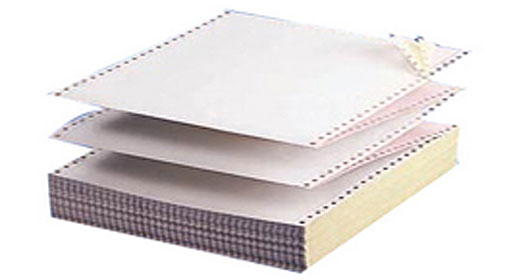 We’re familiar with both these systems now. Fax machines, digital printers, and other electronic devices today include multi-sheet feeds. Their recent predecessor, the dot-matrix printer (basically a computer-driven electric typewriter), used a folded length of perforated pages that, had Jack Kerouac had access to it, would have made it unnecessary for him to invent his famous “scroll” for the writing of On the Road and subsequent works.
We’re familiar with both these systems now. Fax machines, digital printers, and other electronic devices today include multi-sheet feeds. Their recent predecessor, the dot-matrix printer (basically a computer-driven electric typewriter), used a folded length of perforated pages that, had Jack Kerouac had access to it, would have made it unnecessary for him to invent his famous “scroll” for the writing of On the Road and subsequent works.
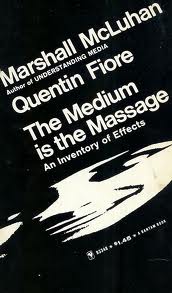 I’ve taken this sidetrack because it highlights the all too often unremarked and/or trivialized fact that tools cannot and should not ever be considered neutral. Whether tangible (a hammer and nails) or intangible (any given language), tools encode assumptions and biases, some unconscious and some not, built into them by those who invent and refine them. Those assumptions and biases are sometimes idiosyncratic but almost always cultural. Once they enter common usage, they transmit and/or reinforce those assumptions and biases in their users. As Marshall McLuhan put it, “We shape our tools and our tools ape us.”
I’ve taken this sidetrack because it highlights the all too often unremarked and/or trivialized fact that tools cannot and should not ever be considered neutral. Whether tangible (a hammer and nails) or intangible (any given language), tools encode assumptions and biases, some unconscious and some not, built into them by those who invent and refine them. Those assumptions and biases are sometimes idiosyncratic but almost always cultural. Once they enter common usage, they transmit and/or reinforce those assumptions and biases in their users. As Marshall McLuhan put it, “We shape our tools and our tools ape us.”
Moreover, they tend to become transparent, invisible, as we increasingly take them for granted, including their idiosyncracies, limitations, and inconveniences. No one complained about the problem of inserting sheet after sheet of paper into the typewriter by hand because that was just the way the typewriter worked. Efficiency experts must have visited large companies and observed their typing pools. The question doesn’t seem to have arisen.
For that matter, my mother Frances, editor-in-chief of my parents’ publishing company, trained and supervised their typing squad. I never heard her mention the matter. She could touch-type 90 words per minute, 10 words slower than Kerouac (but probably more accurate). It took an oddball like Kerouac, attentive to the immediacy of his own creative process, to recognize the interference caused by a feature of his chosen instrument and invent a workaround.
This combination of what Harold A. Innis called “the bias of communication” and the common misperception of communication technologies as inherently neutral is true of the instruments we use to communicate via written language — pen and ink, typewriter, printing press, computer and word-processing program — and it’s no less true of the tools we employ for the production and distribution of photographic images.
“Just a Tool”: No Such Thing
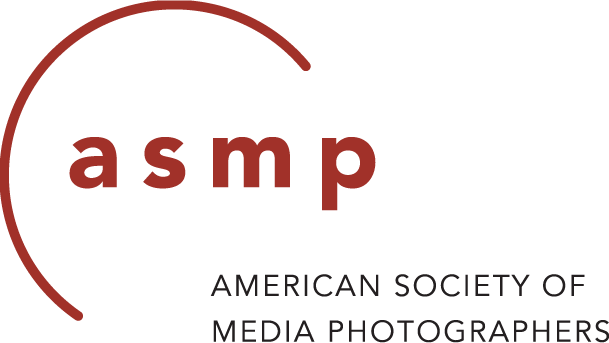 Almost exactly 25 years ago, in November of 1987, I brought my interest in both technologies together. This happened during the course of a panel discussion hosted by the American Society of Magazine Photographers, “The Future of Photography: A New World,” that took place at the Jacob Javits Center in New York City on the evening of November 20, 1987 as part of the annual Photo Expo trade fair. The panel was organized and moderated by photographer Helen Marcus, then ASMP’s president. My co-panelists included photographers Harvey Lloyd, Ron Scott, and Michael O’Connor; Time‘s Arnold Drapkin; Raphaele of Raphaele/Digital Transparencies, Inc.; Alistair Gillett of Young & Rubicam; Henry Scanlon of the Comstock Agency; and Sam Yanes of Polaroid. These are excerpts from my comments.
Almost exactly 25 years ago, in November of 1987, I brought my interest in both technologies together. This happened during the course of a panel discussion hosted by the American Society of Magazine Photographers, “The Future of Photography: A New World,” that took place at the Jacob Javits Center in New York City on the evening of November 20, 1987 as part of the annual Photo Expo trade fair. The panel was organized and moderated by photographer Helen Marcus, then ASMP’s president. My co-panelists included photographers Harvey Lloyd, Ron Scott, and Michael O’Connor; Time‘s Arnold Drapkin; Raphaele of Raphaele/Digital Transparencies, Inc.; Alistair Gillett of Young & Rubicam; Henry Scanlon of the Comstock Agency; and Sam Yanes of Polaroid. These are excerpts from my comments.
. . . Not to say that the individual doesn’t matter, but I think that the impact of technologies on culture — the way cultures use the technologies that they evolve — shapes very much the way that individuals see those technologies.
If I were going to sum up what I think you should know or think about, it’s that, from my standpoint, I’ve seen the future of visual communication and its name is electronic imaging. This is not to say that still photography in silver or aniline dyes is going to disappear completely. But I think that the thrust of the communication activities that take place in our society is going to be centered more and more around electronic imaging in the future.
 And I see this as a two-edged sword. On the one hand, the emergence of these new technologies places the entire wealth, or an increasing proportion of the entire wealth, of the world’s image resources, the material that’s in archives and museums and all kinds of collections and so forth, increasingly at the disposal not only of specialists — picture editors and photographers and guys like Ron [Scott] who are a little bit of everything, and critics and historians — but even at the disposal of the average user. I think within the next five to ten years you’re going to start seeing little kids with little-kid computers being able to hook into, let’s say, the image data bank that the Library of Congress is building on videodisc — and being able to do that, probably, fairly inexpensively.
And I see this as a two-edged sword. On the one hand, the emergence of these new technologies places the entire wealth, or an increasing proportion of the entire wealth, of the world’s image resources, the material that’s in archives and museums and all kinds of collections and so forth, increasingly at the disposal not only of specialists — picture editors and photographers and guys like Ron [Scott] who are a little bit of everything, and critics and historians — but even at the disposal of the average user. I think within the next five to ten years you’re going to start seeing little kids with little-kid computers being able to hook into, let’s say, the image data bank that the Library of Congress is building on videodisc — and being able to do that, probably, fairly inexpensively.
So, on the one hand, there’s a kind of a democratic access to the world’s image resources that’s emerging out of this technology, and I think that’s terrific. On the other hand, the hair on the back of my head rises — at the same time as I’m inspired by looking at the work that Ron is doing or the work that Raphaele is doing — because what’s going on simultaneously is that, as these technologies make possible the manipulation of this imagery, what happens is that the credibility of the photograph as a vehicle for information and as, in some sense, a witnessing device — a vehicle in visual communication for what you might call the language of report — is going to inevitably deteriorate. And that’s going to generate a major cultural shift in our relationship to photography as information.
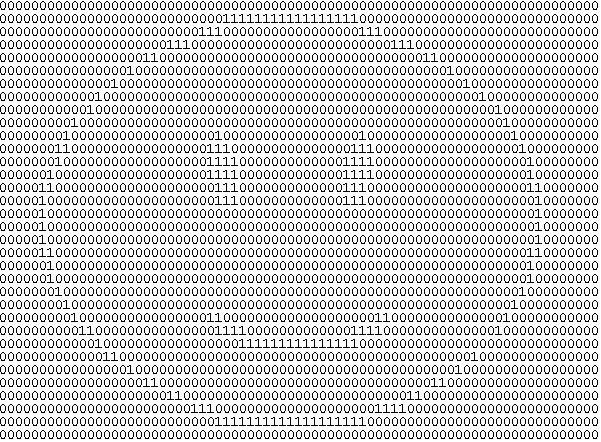 . . . [W]e’re an information-based society, we’ve been an information-based society since the great trading expeditions of the sixteenth century. We’ve been an increasingly information-based society since then. Any information-based society has, as a primary concern, the speed of transmission of information. And any system that lends itself to greater speed of information transmission is going to be the system of choice, ultimately, for the dominant activities of the society. Now, this does not mean that everything else disappears; but it does mean that it becomes more specialized, more rarified — in a certain sense more archaized, and in a certain sense more estheticized.
. . . [W]e’re an information-based society, we’ve been an information-based society since the great trading expeditions of the sixteenth century. We’ve been an increasingly information-based society since then. Any information-based society has, as a primary concern, the speed of transmission of information. And any system that lends itself to greater speed of information transmission is going to be the system of choice, ultimately, for the dominant activities of the society. Now, this does not mean that everything else disappears; but it does mean that it becomes more specialized, more rarified — in a certain sense more archaized, and in a certain sense more estheticized.
I’d like to disagree a bit with a point that’s been made by a couple of my other colleagues here. Tools are not “just” tools. Tools are tools; they make certain things possible, they make certain things easier, and in doing so they shape the way we think about our tasks. Changes in the technology of communication via words have produced changes in what we communicate through words. When the spoken word was our only vehicle, our important verbal formulations had to be full of mnemonic devices, repetitions and such, because it all had to be remembered. So that context dictated style, and quantity as well — there’s only so much that the human mind can remember.
A culture functioning within the oral tradition can only maintain as much verbalized thought as its members can memorize. When writing was developed or introduced — when it became possible to record verbalized thought — the style of verbalized thought changed; so did the content, and the volume of it produced by a culture was no longer limited. That was a radical, substantive change in a medium, created by a transformation of the technology.
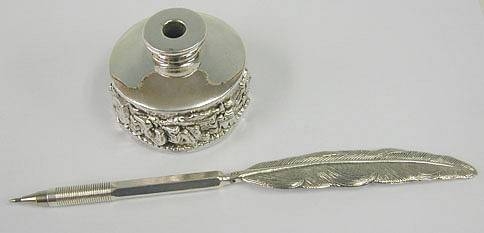 Similarly, when we went in the fifteenth century from the manuscript to the printed page, books became comparatively cheap, social literacy became possible at last, and the audience for the written word expanded exponentially. This changed the writer’s concept of who he was writing for, which once again changed the substance of what he wrote. And when handwriting became an option for writers instead of a necessity — when another technological innovation allowed us to shift from printed poetry coming from handwritten manuscripts to the typewriter — poetry changed. Writer’s cramp disappeared. And let me tell you, folks, that’s a major change in the experience of the working writer, the disappearance of writer’s cramp. I don’t mean that jokingly: that’s a major change in the process of writing. . . . You write more when you don’t get writer’s cramp.
Similarly, when we went in the fifteenth century from the manuscript to the printed page, books became comparatively cheap, social literacy became possible at last, and the audience for the written word expanded exponentially. This changed the writer’s concept of who he was writing for, which once again changed the substance of what he wrote. And when handwriting became an option for writers instead of a necessity — when another technological innovation allowed us to shift from printed poetry coming from handwritten manuscripts to the typewriter — poetry changed. Writer’s cramp disappeared. And let me tell you, folks, that’s a major change in the experience of the working writer, the disappearance of writer’s cramp. I don’t mean that jokingly: that’s a major change in the process of writing. . . . You write more when you don’t get writer’s cramp.
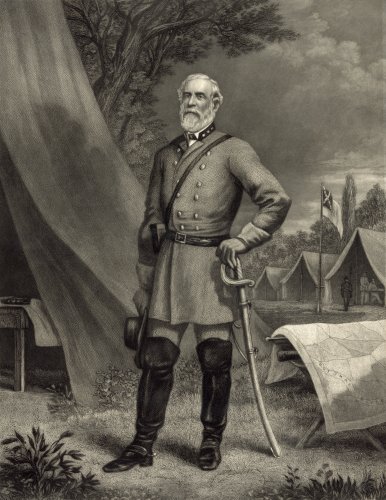
Gen. Robert E. Lee, photographed by Mathew Brady in his N.Y. studio, 1867; engraved by J.C. McRae, N.Y.
. . . Back before the days of the halftone, back around 1870 or so when pictures, photographs, were being produced but they couldn’t yet be reproduced as photographs, it was the custom in newspapers and magazines to derive from photographs line drawings or engravings or etchings which they would then reproduce. And they often in fact were not dissimilar in the fundamental strategy of image production from what we just saw on the screen [digitally manipulated photographs]. That is, they’d eliminate some elements that they thought didn’t work so well, they’d add trees if someone thought it needed some trees. And it would always say underneath it, “from an original photograph by Mathew Brady,” or whatever. So there was an aura of photographic credibility that went with what were basically really fictions — not just serious interpretations, which all photographs are, idiosyncratic interpretations, but total fictions.
It seems to me that maybe the time has come for the ASMP to consider proposing some kind of legislation that might require, underneath photographic illustrations — as distinct from photographs — something that says, “Not from a single negative,” or “Not from an original photograph,” or “From original photographs by X, Y and Z.” [From the audience: “Like ‘non-dairy creamer?’”] Right! That’s great. Because the question becomes, how are we then to treat those images made with this technology, through these strategies, that are presented to us as informational — not simply as illustrational, but as informational? How then are we to deal with the information level of images that have the appearance of photographic credibility? I think there’s going to be a major cultural problem. We’ve got a century and a half, folks, invested in the idea of the photograph having some kind of authentic transactional relationship to what’s depicted.
•
Marshall McLuhan was also fond of saying, “Whoever discovered water, it wasn’t a fish” — meaning that we’re normally oblivious to our surroundings. Jack Kerouac paid close attention to the experience of the act of writing on a typewriter; hence his creation of his scroll. A good model of craft consciousness for anyone working in any medium to ponder.
This applies to photography as well. My late colleague Richard Kirstel published an article in the ’70s titled “Photography and the Schlep Factor.” Its thesis: The equipment you carry determines the pictures you make — or, as he put it (I’m quoting from memory), “As you schlep, so shall you photograph.”
•
This post supported by a donation from the Estate of Lyle Bongé.



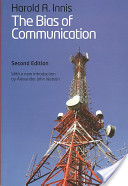
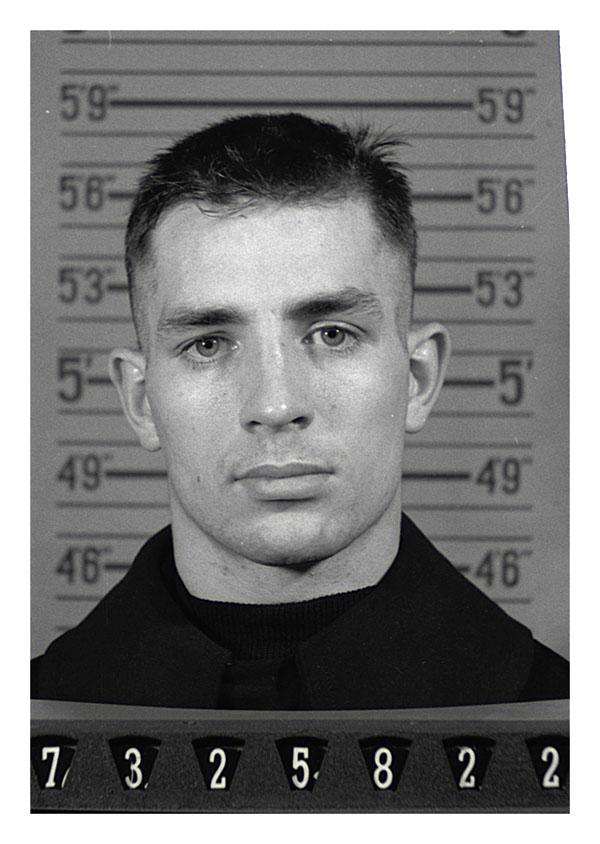




Leave a Comment